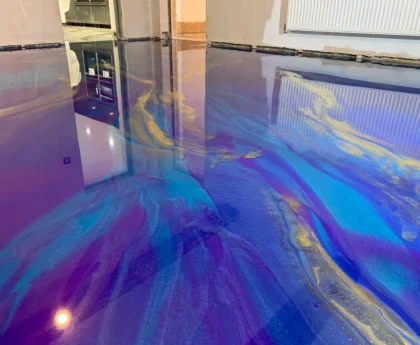Basement waterproofing is an essential process in protecting your home from water damage. Without proper waterproofing, moisture can seep into your basement, leading to issues such as mold, mildew, and significant structural damage. This article will discuss why basement waterproofing is important, the common signs that indicate your basement needs waterproofing, and the best techniques to ensure your basement remains dry and safe for the long term.
Why Basement Waterproofing Is Vital
Prevents Mold and Mildew Growth
The main reason to invest in basement waterproofing is to prevent the growth of mold and mildew. Basements are naturally prone to dampness, and when moisture is allowed to enter, it creates the perfect environment for mold and mildew to thrive. These fungi can not only damage the building materials of your basement but also lead to health problems for you and your family. By properly waterproofing your basement, you can ensure that the space remains dry, reducing the chances of mold and mildew growth and safeguarding both your home and your health.
Preserves the Structural Integrity of Your Home
Moisture entering your basement can weaken the foundation of your home over time. It can cause cracks in the foundation, leading to erosion and potential structural shifts that can affect the stability of your entire house. Basement waterproofing helps maintain the structural integrity of your home by preventing water infiltration. With a properly sealed basement, you ensure that your home’s foundation remains intact, protecting your investment in the long term.
Increases Home Value
Homes with dry, functional basements are more valuable on the real estate market. Many potential homebuyers look for usable basements that can serve as extra living space, storage, or even a recreation room. Basement waterproofing makes your basement a more attractive feature, adding both functionality and value to your property. A waterproofed basement ensures that your home is not only protected but also maintains a higher resale value.
Prevents Flooding and Water Damage
Flooding in the basement is a common issue that homeowners face, especially in areas with heavy rainfall or high groundwater levels. Water damage from flooding can lead to costly repairs, ruined belongings, and serious damage to the structural components of your home. Basement waterproofing is designed to keep water out and prevent flooding. By investing in waterproofing measures, you reduce the likelihood of basement flooding and ensure that your belongings, furniture, and other valuable items remain safe and dry.
Common Signs You Need Basement Waterproofing
Recognizing the signs of water damage early can help prevent major issues later. If you notice any of the following signs, it may be time to consider basement waterproofing:
Cracks in the Foundation
Visible cracks in the basement walls or floor are clear indicators that water is infiltrating your basement. These cracks may start as small hairline fractures but can quickly expand, allowing more water to seep in. If left untreated, these cracks can lead to major foundation issues and extensive water damage. Sealing the cracks through basement waterproofing can prevent further deterioration and protect your home’s foundation.
Water Stains or Damp Walls
If you notice water stains or damp patches on the basement walls, this is a sign that moisture is entering your basement. This could lead to more serious problems, such as mold and mildew growth. Basement waterproofing will prevent moisture from entering and keep your basement dry.
Musty Odor
A musty odor in your basement is often a sign of moisture buildup, which can lead to mold and mildew. If you detect this smell, it’s a clear indication that your basement is damp and in need of waterproofing. The basement waterproofing process will eliminate the moisture source, stopping the musty odor and preventing mold growth.
Puddles or Standing Water
Puddles or standing water in the basement are a major sign of inadequate waterproofing. Water collecting on the basement floor could indicate that your home is at risk for flooding. Proper basement waterproofing will prevent water from entering your basement, ensuring it remains dry and safe.
Methods of Basement Waterproofing
Several methods can be used to waterproof your basement effectively. Each method depends on the specific needs of your home and the type of water issues you are facing.
Exterior Waterproofing
This method involves digging around the foundation of your home and applying a waterproof barrier to the exterior of your basement walls. This prevents water from entering through the foundation by creating a protective layer that redirects moisture away from your home.
Interior Waterproofing
Interior waterproofing includes the installation of a drainage system, sump pumps, and vapor barriers inside your basement. This method is used when the water issue is less severe or when exterior waterproofing is not possible due to landscape or other factors.
Crack Repair
For basements with foundation cracks, crack repair is an essential part of the basement waterproofing process. Specialized epoxy injections or polyurethane foam are used to seal cracks and prevent water from entering. This repair method can help maintain the structural integrity of your foundation and prevent further water infiltration.
Sump Pumps
Sump pumps are used to remove water from the basement. If you live in an area prone to flooding or have issues with groundwater, installing a sump pump as part of your basement waterproofing plan can help ensure that your basement stays dry by pumping water out before it can accumulate.
Conclusion
Basement waterproofing is not just about keeping your basement dry; it’s an investment in the overall health and longevity of your home. By taking steps to waterproof your basement, you prevent mold growth, preserve your foundation, and increase your home’s value. Don’t wait for water damage to occur—take action today to protect your home and ensure that your basement remains a safe, dry, and usable space for years to come.





